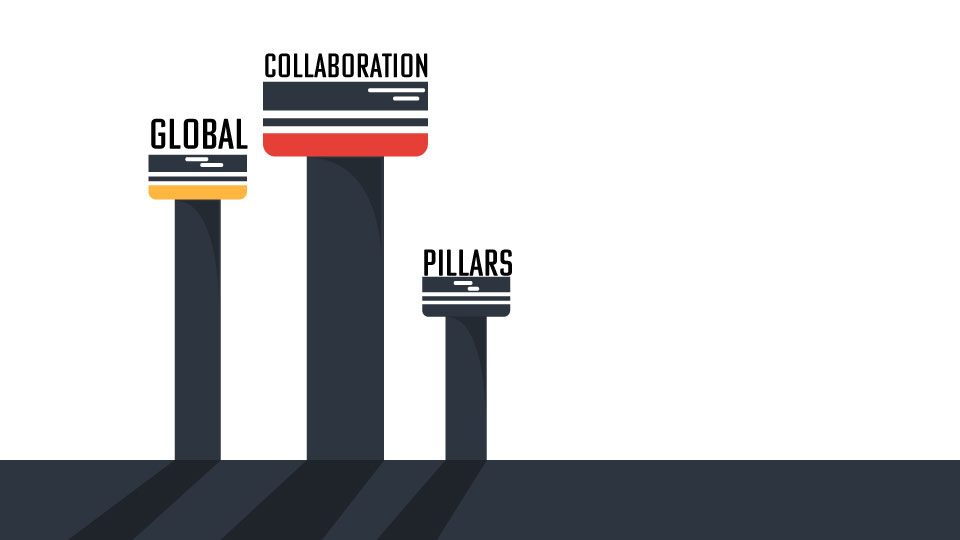Recently, we put together a white paper on global collaboration — the challenges and successes — and identified three core pillars of making global teams and client relationships work. Those were:
- Co-creation and co-strategizing
- Trust
- Alignment and agreement
All three concepts are similar, yes.
We blogged about co-strategizing before, as well as about building trust. Now we want to spend a few minutes on getting alignment and agreement, either internally (with employees) or externally (with your clients).
Global Collaboration Pillar: Alignment and agreement
The three biggest impediments to collaboration, according to former Cisco executive Ron Ricci (author of a book on the subject), are:
- Unclear goals
- Lack of a transparent decision-making process
- Top management not sticking to their processes
As such, the first key step to effective collaboration is setting clear goals:
- Why is this specific team working together?
- What is the ultimate goal?
- Who is in charge of each aspect?
You also need to set norms and processes between the main company and the outsourced partner. How important is transparency and getting things out in the open? How often will the team meet? How will the meeting be structured? What will be the follow-up process on action items? Who will be checking on these things? In sum: what are the communication protocols?
Finally, use metrics, data or some form of analysis as the group begins to work together to ascertain how successful the group is at the ultimate goal. This doesn’t mean analyze one thing and then immediately change course if it isn’t working. Rather, it means having checkpointed goals (three weeks, six weeks, etc.) so that the collaborating group can make sure they’re on track and not getting too far from goals. When we work with clients, we use various customer success metrics that can be scaled, but we tweak the reporting of them — and which metrics get reported — based on what the clients value the most. We need to be on the same page about what metrics constitute great delivery, or else the potential for collaboration isn’t there.
The bottom line on global collaboration
The tenets are simple, but not easy to execute.
We all have a lot going on with our days — projects, deadlines, meetings, calls, metrics to report, and oh yes our families and friends and pets — and trying to manage all that, globally, can become a mess of tasks and due dates. We have all experienced this.
Try to understand, above all, what your collaborative partner values the most. What do they want to see from you and see executed and reported on? If you can consistently achieve what they expect, you build trust, and as you build trust and have more time with a partner, collaboration becomes better and better.
It’s not easy, and we’d never claim it’s easy. But the backbone steps of global collaboration are relatively simple, at least in theory.
If you ever need any help with co-creation, trust-building, or any other attempts at outsourcing collaboration, we’d welcome a conversation.

















